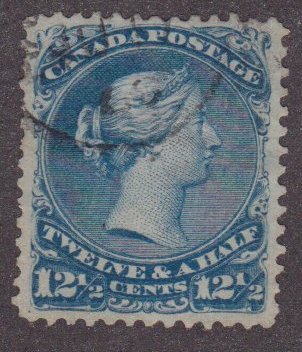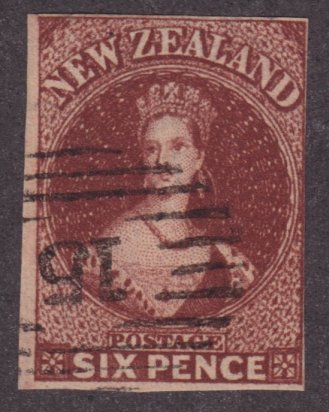
Discussion - Member to Member Sales - Research Center

Discussion - Member to Member Sales - Research Center




Some fakes/reprints of recent provenance. All easily spotted by the perforation. Originals of these stamps are comb perforted. Of course, if you use Scott, you don't know that.

Login to Like
this post
Do you have some of the genuine you could show for comparison? I have no idea what the different perf methods look like so this could be one of those teaching moments if you can
Thanks
Brian

Login to Like
this post

08:17:25pm
Here is an illustration of the two types of common perforations that I lifted from another site;
-------- Comb perfs on the left and Line perfs on the right.--------
If you want to read some interesting information about perfortions,click here

Login to Like
this post
Thanks, cdj1122, for already posting some very good illustrations. The difference between line and comb perforation shows distinctly at the corners. Stamps are line perforated by running a single line of perforation holes between two rows of stamps. Then, the sheet is advanced and the next line of perforation holes is cut. Once the whole sheet is perforated in one direction, it is turned by ninety degrees and perforations are made in the other direction. The result are perforation holes that do not exactly meet at the corners of the stamps. Comb perforations are made by a device that applies perforations in both directions at the same time. To accomplish this, the perforation needles are arranged in a comb-like pattern. I took the liberty to lift an image of such a perforation machine from John's (KG5) wonderful posting
Australian KG V stamps revealed
which clearly shows why it is called a "comb."

Comb perforation results in uniform looking stamp corners with a single perforation hole at each corner. Why the foreword to Scott's U.S. specialized catalog uses the term "strike" perforation is not clear to me. I believe "comb perforation" is the more common term -- but I'll take advice on this. At a minimum, "strike" perforation is an ambiguous term and without an illustration, like the one above, the whole discussion in the catalog is quite worthless anyways.
Finally, Brian, here is one example of an original comb perforated 1928 Nothilfe stamp:

This is actually not a very expensive stamp. Which is why it probably is a more dangerous forgery than the Zeppelin stamps. This particular fake actually has the word "FAUX" in microscript appearing below the oval (below 'CH' of DEUTSCHE), but I am sure this can be easily overlooked in the usual poor lighting at stamp shows. Also, I would not be surprised if you will find plenty of these stamps with the word FAUX carefully scrapped off. It is one of the many forgeries attributed to Peter Winter. If you are not familiar with his very common forgeries, hundreds of which are listed on ebay TODAY, please find out more here.

Login to Like
this post
Thanks all. This is very helpful in understanding our hobby. There are always people here who can give us the answers and I'm always learning something new here.
Brian

Login to Like
this post
THANK YOU, RHINELANDER, FOR EDUCATING ME AND, NO DOUBT, OTHER STAMPORAMA MEMBERS ON THE PERILS OF BEING UNINFORMED ON FAKE STAMPS - AN EXCELLENT, ILLUSTRATED LESSON.
JOHN DERRY

Login to Like
this post




Some fakes/reprints of recent provenance. All easily spotted by the perforation. Originals of these stamps are comb perforted. Of course, if you use Scott, you don't know that.

Login to Like
this post

re: Distinguishing line and comb perforation; forgeries
Do you have some of the genuine you could show for comparison? I have no idea what the different perf methods look like so this could be one of those teaching moments if you can
Thanks
Brian

Login to Like
this post
Silence in the face of adversity is the father of complicity and collusion, the first cousins of conspiracy..
08 Dec 2011
08:17:25pm
re: Distinguishing line and comb perforation; forgeries
Here is an illustration of the two types of common perforations that I lifted from another site;
-------- Comb perfs on the left and Line perfs on the right.--------
If you want to read some interesting information about perfortions,click here

Login to Like
this post

re: Distinguishing line and comb perforation; forgeries
Thanks, cdj1122, for already posting some very good illustrations. The difference between line and comb perforation shows distinctly at the corners. Stamps are line perforated by running a single line of perforation holes between two rows of stamps. Then, the sheet is advanced and the next line of perforation holes is cut. Once the whole sheet is perforated in one direction, it is turned by ninety degrees and perforations are made in the other direction. The result are perforation holes that do not exactly meet at the corners of the stamps. Comb perforations are made by a device that applies perforations in both directions at the same time. To accomplish this, the perforation needles are arranged in a comb-like pattern. I took the liberty to lift an image of such a perforation machine from John's (KG5) wonderful posting
Australian KG V stamps revealed
which clearly shows why it is called a "comb."

Comb perforation results in uniform looking stamp corners with a single perforation hole at each corner. Why the foreword to Scott's U.S. specialized catalog uses the term "strike" perforation is not clear to me. I believe "comb perforation" is the more common term -- but I'll take advice on this. At a minimum, "strike" perforation is an ambiguous term and without an illustration, like the one above, the whole discussion in the catalog is quite worthless anyways.
Finally, Brian, here is one example of an original comb perforated 1928 Nothilfe stamp:

This is actually not a very expensive stamp. Which is why it probably is a more dangerous forgery than the Zeppelin stamps. This particular fake actually has the word "FAUX" in microscript appearing below the oval (below 'CH' of DEUTSCHE), but I am sure this can be easily overlooked in the usual poor lighting at stamp shows. Also, I would not be surprised if you will find plenty of these stamps with the word FAUX carefully scrapped off. It is one of the many forgeries attributed to Peter Winter. If you are not familiar with his very common forgeries, hundreds of which are listed on ebay TODAY, please find out more here.

Login to Like
this post

re: Distinguishing line and comb perforation; forgeries
Thanks all. This is very helpful in understanding our hobby. There are always people here who can give us the answers and I'm always learning something new here.
Brian

Login to Like
this post
The past is a foreign country, they do things different there.
11 Dec 2011
01:37:43pm
re: Distinguishing line and comb perforation; forgeries
THANK YOU, RHINELANDER, FOR EDUCATING ME AND, NO DOUBT, OTHER STAMPORAMA MEMBERS ON THE PERILS OF BEING UNINFORMED ON FAKE STAMPS - AN EXCELLENT, ILLUSTRATED LESSON.
JOHN DERRY

Login to Like
this post

